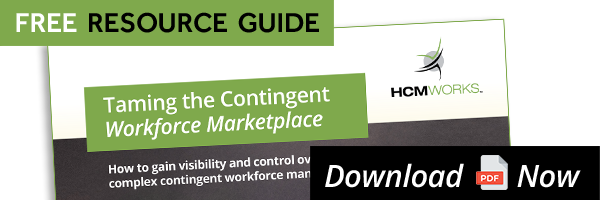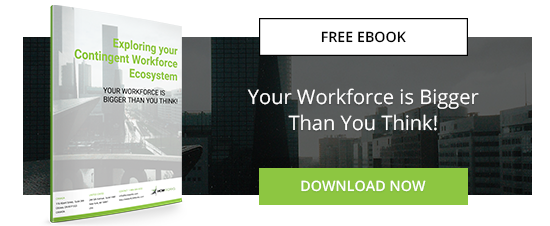Recent decades have seen a monumental change in the way we work, flex-time instead of the standard 9-5, suits to business casual (and even casual), remote working, and a shift away from isolating cubicles to open concept collaborative workspace.
A career is a much more fluid concept, with many people pursuing entirely different lines of work within their work life. No longer will workers stay with a company from high school to retirement - priorities have changed and opportunities are greater.
The job market norm is switching from structured to flexible work. Working full-time as an independent worker, also known as a contingent worker, is a great way for people to test the waters of a company without fully committing, gain invaluable experience, and make a real impact on a business.
Highly successful businesses have adapted to these workplace changes, and have benefited from higher employee satisfaction, greater access to talent, and increases in productivity, creativity, and innovation.
There is no doubt that the modern workforce, and in particular the ever-increasing contingent workforce, is making its mark on corporate culture and practices.
The Age of the Freelancer
In one of our recent blogs on the trend to hire freelancers , we discussed the increasing influence of the age of the freelancers and the contingent workforce, on large and small companies across North America.
Businesses have a much less rigid structure when it comes to hiring workers, being flexible and even sometimes favoring freelance, contract, internships and contingents over standard workers.
A PWC survey found that a staggering 38% of respondents expect to be in a different job within the next year, and an almost equal percentage, 33%, felt they had not been provided with opportunities to learn and grow on the job.
Freelancers on the other hand, can see their career as a series of opportunities for skill development, and will seek out specific assignments that deliver new experiences.
Business can leverage the diverse skill set of freelance workers and infuse / transfer experience and knowledge back into their organization.
Flexible structure
As Baby Boomers retire, the workforce becomes a cross-section of Gen Z, Millennials, Gen X and Boomers, and companies need to adapt to the demands and work ethic of the new demographic.
In addition, work is increasingly structured into projects, and the project team will have corporate stakeholders, corporate staff employees, as well as contingent hires. A project structure can be more flexible and responsive to the need for talent, over having the work done within a specific department’s roles / responsibilities and using full-time staff.
Larger traditional organizations are renowned for being more formal, and often stuck in their ways (or just slow to change), whereas businesses utilizing contingent workforces are typically seen as fluid, ever-changing, and have a more contemporary outlook on employment, thereby taking advantage of flexible work structures and preparing for new hire demographics.
Employee Experience > Customer Experience
An area of opportunity, often overlooked by many companies until there is a noticeable problem, is employee experience. Your company is your workforce and your workforce is your company; paying more heed to employee satisfaction creates a ripple effect positively impacting your business.
Historically most organizations focused on customer experience, but with this ever-changing workforce and talent landscape, it’s key to design a more engaging employee experience. Having employees who are passionate about work, who enjoy coming into work, will project positive energy outwards to your customers.
What about Contractor Experience? In the end, contingent workers are also key in generating great customer relations. A highly engaged contingent worker who feels valued, and is aligned with your company’s ideas about success, will equally develop positive relationships within and outside of your organization with customers.
Recognition of Workers
The contingent workforce has influenced how companies acknowledge and recognize achievements. In particular, contingent workers want to be more than just a number. They are building a career of experiences and they are often on a limited schedule to make their mark. Contingent workers want to have a real impact on a business and also want to be recognized for their impact. It’s important, however, to draw a clear line between recognising their contribution through praise and encouragement as opposed to formal evaluation and performance management. This is important from a co-employment perspective. In the end with the right motivation both parties win and the contractors can leverage their accomplishments to get the next big opportunity.
The adage, “change before you have to ...”, may well apply to your organization. Are you preparing for shifting demographics and the impact of contingent workers on your work environment? Give us a call to discuss your business and we’ll help identify opportunities for contingent workforce management, and access to contingent talent.




